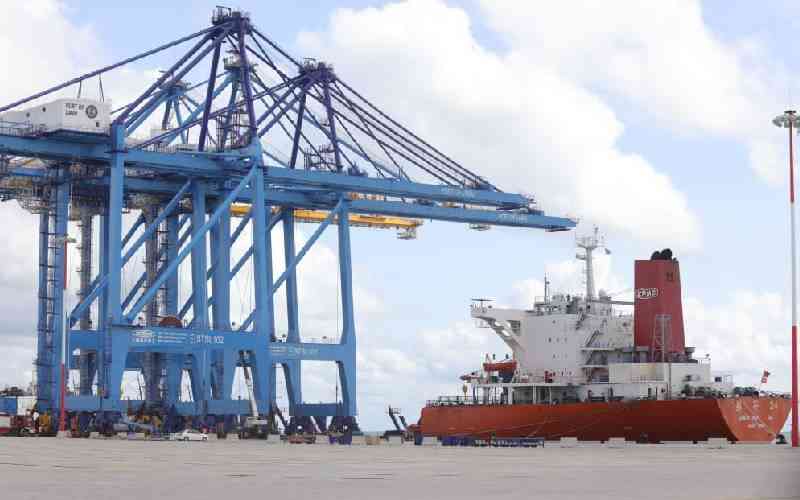In December 2016, the Ministry of Devolution and Planning embarked on the preparation for the Third Medium-Term Plan (MTP3), which outlines Kenya’s development focus for the next five years (2018- 2022). The key drivers of the MTP3 include the achievement of 10 per cent GDP growth, and assuring Kenya’s transition into a middle-income economy.
Medium-Term Planning is a constitutional process to inform budgetary spending in five-year phases. To ensure adequate representation and expertise across economic, social and political pillars, the MTP integrates the input of external stakeholders in the private sector, youth, and international organisations through working and thematic groups. Following the August elections, the draft MTP3 will assimilate the winning party manifesto in order to ensure that the incoming government adopts a well-informed and representative agenda for development. The final MTP3 will then be launched by the incoming head of state in December, and become operational in January 2018.
Tremendous progress
The MTP2 achieved overall GDP growth of 6.2 per cent as at December 2016. The transport sector made tremendous progress in enhancing access, and easing movement of goods and people. Besides the remarkable realisation of the recently launched Standard Gauge Railway, other developments included the completion and launch of a second container terminal at the port of Mombasa; the completion of terminal 1A at JKIA; rehabilitation and modernisation of airstrips across the country; developments across the LAPSSET corridor; and construction of new roads and bridges.
In Energy, power capacity increased from 1,690 MW to 2,341 MW in 2016, headlining ongoing efforts to make energy more affordable and accessible. Additional customers and schools were also connected to power, and transmission networks were expanded. The oil and gas sector was strengthened by the ongoing construction of the Mombasa to Nairobi pipeline, and the completion and commissioning of the Nakuru to Kisumu pipeline.
By 2015, 74 oil exploration wells had been drilled, and new exploration blocks increased from 46 to 63. So far, 36 blocks have been licensed to 18 international oil companies. National security improved as a result of various initiatives to reduce terror threats and insecurity. These included the reactivation of emergency numbers to enhance responsiveness, installation of 3,100 surveillance cameras in Nairobi and Mombasa, and recruitment of additional 26,000 police men/women. These and other efforts contributed to the tourism industry’s recovery, and normalised hotel occupancy.
Developments in Health included the implementation of the Managed Equipment Services Programme in 98 hospitals to enhance healthcare delivery, expansion of NHIF coverage and benefits, introduction of free maternity services, increased immunization coverage and a decline in Malaria and HIV prevalence.
The challenges
Despite its many successes, The MTP2 period faced some challenges. Looking ahead, the MTP3 will continue addressing devolution challenges through sustained commitment to building consensus on devolution implementation and service delivery.The MTP3 will also adopt new frameworks to support financing for all the planned activities, and improve on procedures for land acquisition for flagship infrastructure projects. Further efforts will also focus on public sector reforms to promote national values, and improve governance and accountability.
Besides carrying key infrastructure projects to completion, the MTP3 will also focus on structural transformation of manufacturing and industry, increasing exports, growing Micro, Small and Medium Enterprises, irrigation and food security, water access and sanitation, job creation, and security. The Blue Economy and maritime sector will also receive amplified priority in the MTP3. Ultimately, the success of the MTP3, will depend on the participation, and goodwill of all Kenyans; including government commitment to guarantee delivery.
Mr Nyakera is the Principal Secretary for Planning & Statistics
 The Standard Group Plc is a
multi-media organization with investments in media platforms spanning newspaper
print operations, television, radio broadcasting, digital and online services. The
Standard Group is recognized as a leading multi-media house in Kenya with a key
influence in matters of national and international interest.
The Standard Group Plc is a
multi-media organization with investments in media platforms spanning newspaper
print operations, television, radio broadcasting, digital and online services. The
Standard Group is recognized as a leading multi-media house in Kenya with a key
influence in matters of national and international interest.
 The Standard Group Plc is a
multi-media organization with investments in media platforms spanning newspaper
print operations, television, radio broadcasting, digital and online services. The
Standard Group is recognized as a leading multi-media house in Kenya with a key
influence in matters of national and international interest.
The Standard Group Plc is a
multi-media organization with investments in media platforms spanning newspaper
print operations, television, radio broadcasting, digital and online services. The
Standard Group is recognized as a leading multi-media house in Kenya with a key
influence in matters of national and international interest.









